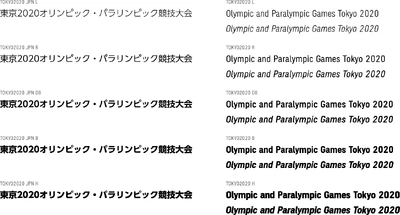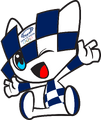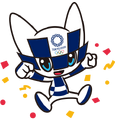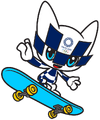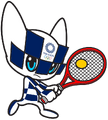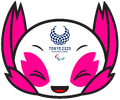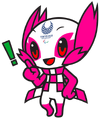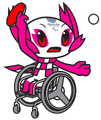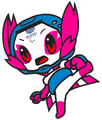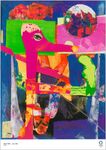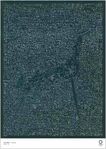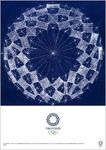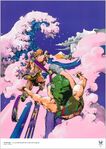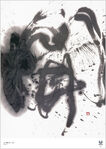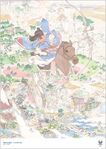| Emblems • Assets • Look of the Games • Pictograms • Medals • Torch Relays • Other |
Motto[]
The official Games' motto was unveiled in a promotional video released by the Tokyo Organising Committee of the Olympic and Paralympic Games (TOCOG) on 17 February 2020.[1] The official slogan is "United by Emotion", which calls on sports' unique ability to unify people from all walks of life as a common interest. The motto itself will be presented only in English.
Typography[]
The official font of the Games was first implemented in 2018, and was created by Japanese typography firm Morisawa,[2] who was involved with the previous Tokyo Olympic Games in 1964, developing the on-screen presentation or "TELOP" system for those games. In their current capacity, they operate as a type foundry that specialises in Universal Design fonts. What Morisawa aimed to achieve with the development of the font was to encourage the adoption of Universal Design philosophies across society. This attitude is best encapsulated by the phrase "A Stirring Moment Preserved Forever Through Typography", taken from an internal memorandum within the company.
The philosophies of Universal Design were central to the creation of the Tokyo 2020 typeface, a neutral font with minimal flourishes and optimal readability. The font itself consists of a standard Pr6 Kanji layout of 23,058 characters, 300 standard Latin characters, and various other characters. Morisawa saw the Latin characters as fundamental to the font's success as a whole, and worked closely with employees of its American division to craft them. Kanji characters were designed to appear closer to handwritten shapes to aid in recognition. They also eliminated loose ends on strokes to retain a balance between positive and negative space.
Mascots[]
|
|
|
In 2017, the TOCOG held a competition to design the 2020 mascots. The process was reduced to three shortlists of two mascots in late-October 2017. The winning candidate was Pair A (designed by Ryo Taniguchi), and was announced on 28 February 2018. On 22 July, the mascots were given official names: Miraitowa (ミライトワ), named after the Japanese words for "future" and "eternity", and Someity (ソメイティ), after the yoshino type of cherry blossom and the English phrase "So mighty".
Miraitowa[]
Someity[]
Official posters[]
On 7 January 2020, TOCOG revealed 20 official posters for the Games, created by a mixed of local and international artists. The posters were placed on public display in an exhibition at the Museum of Contemporary Art Tokyo.
Tokyo 2020 +1[]
Like many events in 2020, the Olympic and Paralympic Games fell victim to the COVID-19 pandemic; which forced the postponement of the games until the next year. On 23 July 2020, the TOCOG staged a brief "1 Year to Go" message, presenting a graphic used in tandem with the event wordmark: a handwritten "+1" accompanied by the phrase "One Step Forward".
Victory Ceremony[]
The Victory Ceremony assets of the Tokyo 2020 Olympic & Paralympic Games were unveiled on 3 June 2021.
The podiums for these games were created from recycled plastic panels, 3D-printed and arranged in a tessellating pattern, congruent with the games' emblems. The Olympic Rings, Paralympic Agitos and event wordmark were milled from a metal plate.
After being retired at the Rio 2016 Games, flowers bouquets make a return as offerings to podium finishers. The flowers themselves originate from the Miyagi, Fukushima and Iwate prefectures; areas still recovering from the 2011 Great East Japan Earthquake. They were presented with a small figurines of Miraitowa (for Olympians) or Someity (for Paralympians) colored to match the corresponding medal.
Composer Naoki Sato was responsible for the Victory Ceremony music, which plays as athletes are ushered onto the podium and presented with their medals. She created the theme with the goal of being uplifting for the athletes, and she deliberately avoided using overtly Japanese sounding instruments.


